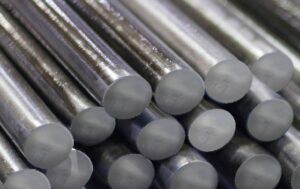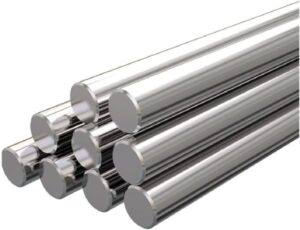Stainless steel, with its remarkable properties, has revolutionized industries worldwide. Among its diverse alloys, the 316 stainless steel round bar stands as a testament to versatility. In this comprehensive exploration, we uncover the multifaceted nature of 316 stainless steel, delving into its unique attributes, applications across various sectors, and why it should be your top choice for a wide range of projects.
Understanding 316 Stainless Steel
What Sets 316 Stainless Steel Apart?
At its core, 316 stainless steel is an austenitic stainless steel alloy, known for its exceptional chemical composition. This alloy typically comprises 16-18% chromium, 10-14% nickel, 2-3% molybdenum, and a blend of trace elements, all of which contribute to its extraordinary properties.
Key Properties of 316 Stainless Steel
1. Corrosion Resistance
The hallmark of 316 stainless steel is its unrivaled resistance to corrosion. This property makes it an ideal choice for applications exposed to moisture, chemicals, and challenging environments. Industries such as marine, chemical, and pharmaceuticals rely on its durability.
2. High-Temperature Stability
316 stainless steel maintains its strength and corrosion resistance at elevated temperatures, making it invaluable in industries with high-temperature processes, such as industrial furnaces and exhaust systems.
3. Strength and Durability
With a high tensile strength and exceptional toughness, 316 stainless steel excels in withstanding heavy loads and harsh conditions, making it a staple in construction and structural applications.
4. Ease of Fabrication
Versatility is a defining feature of 316 stainless steel. It can be easily fabricated through various techniques, including welding and forming, which adds to its popularity in diverse industries.
Applications Across Industries
Construction and Architecture: Form Meets Function
316 stainless steel round bars serve as the backbone of many construction and architectural projects. Whether in structural components, handrails, or decorative elements, it combines strength, corrosion resistance, and aesthetics for indoor and outdoor applications.
Marine Industry: Defying the Elements
Its moniker as marine-grade stainless steel is well-deserved. In shipbuilding and maritime applications, 316 stainless steel is used for boat fittings, marine hardware, and equipment that must withstand saltwater and harsh marine conditions.
Chemical Processing: Battling Corrosive Forces
Chemical plants and laboratories turn to 316 stainless steel for its resistance to corrosive chemicals. It is employed in tanks, pipes, valves, and pumps that handle a wide range of acids and corrosive substances.
Food and Beverage Industry: A Taste of Safety
316 stainless steel is considered food-grade, making it a top choice for food processing equipment such as tanks, conveyors, and storage containers. Its corrosion resistance ensures product purity.
Pharmaceuticals: A Prescription for Cleanliness
In the pharmaceutical industry, cleanliness and resistance to corrosion are paramount. 316 stainless steel is used for equipment like pharmaceutical reactors, storage vessels, and piping systems where product purity is essential.
Automotive and Aerospace: Strength in Lightness
Both the automotive and aerospace sectors benefit from the lightweight yet strong nature of 316 stainless steel. It finds applications in exhaust systems, aircraft components, and various engine parts.
Medical Devices: Precision and Biocompatibility
Medical instruments and devices require materials with biocompatibility and corrosion resistance. 316 stainless steel is a preferred choice for surgical instruments, orthopedic implants, and dental tools.
Oil and Gas: Conquering Harsh Environments
The oil and gas industry relies on 316 stainless steel for downhole equipment, pipelines, and offshore platforms. Its resistance to corrosion in harsh environments is invaluable.
Frequently Asked Questions (FAQ)
1. Is 316 stainless steel magnetic?
No, 316 stainless steel is typically non-magnetic due to its austenitic crystalline structure. This sets it apart from the magnetic properties of ferritic or martensitic stainless steel.
2. How does 316 stainless steel compare to 304 stainless steel?
Both 316 and 304 stainless steel are austenitic alloys, but 316 contains molybdenum, which enhances its corrosion resistance. Therefore, 316 is preferable in marine and chemical environments, while 304 is suitable where corrosion resistance is less critical.
3. Can 316 stainless steel withstand outdoor exposure?
Yes, 316 stainless steel is an excellent choice for outdoor applications. Its corrosion resistance, even in saltwater environments, makes it ideal for structures, handrails, and decorative elements exposed to the elements.
4. What distinguishes 316 stainless steel from its low-carbon counterpart, 316L?
316L stainless steel is a low-carbon variation of 316, offering better corrosion resistance in welding applications. It is often preferred to prevent carbide precipitation and subsequent corrosion during welding.
In conclusion, the versatility of 316 stainless steel round bars is a testament to human innovation and engineering prowess. Its exceptional properties, from corrosion resistance to strength and ease of fabrication, make it a top choice in industries where reliability, durability, and adaptability are paramount. Whether you’re building a skyscraper, a medical device, or an offshore rig, 316 stainless steel remains a stalwart, ready to meet the demands of your project with unmatched versatility.


